Bhutan, Nepal & the Mystical Himalayas
October 5-27, 2011
NEPAL - October 13-27, 2011
Page Eleven - Back in Kathmandu
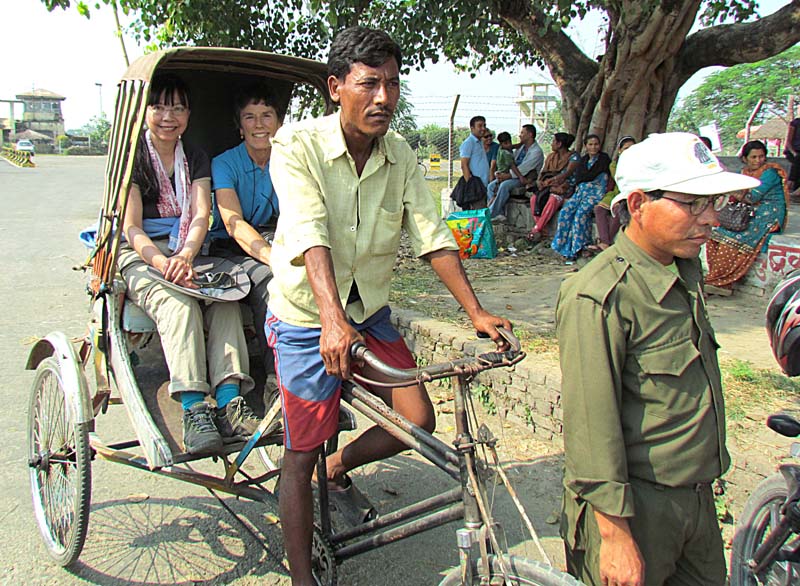
Vanie from Arkansas and Pat riding a bike rickshaw in Bharatpur to our lunch stop, before flying to Kathmandu from that town.
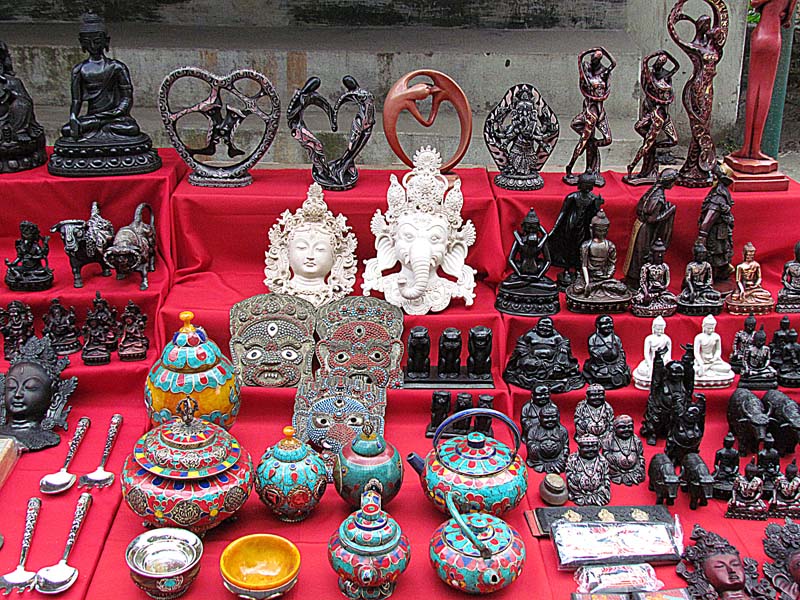
A variety of souvenirs at a vendor's stand near Pashupatinath Temple in Kathmandu

Ever present sacred cows along the river at Pashupatinath Temple. Pashupatinath is the most important Hindu temple in Nepal and probably
the most important temple dedicated to Shiva in the world. Many Hindus from India and elsewhere come here. Shiva is the destroyer and
creator and appears in many forms. One of his peaceful incarnations is as Pashupati, the lord of the beasts. No animal sacrifices are thus
made here, but they are made at a nearby temple. Non Hindus are not allowed inside the temple.
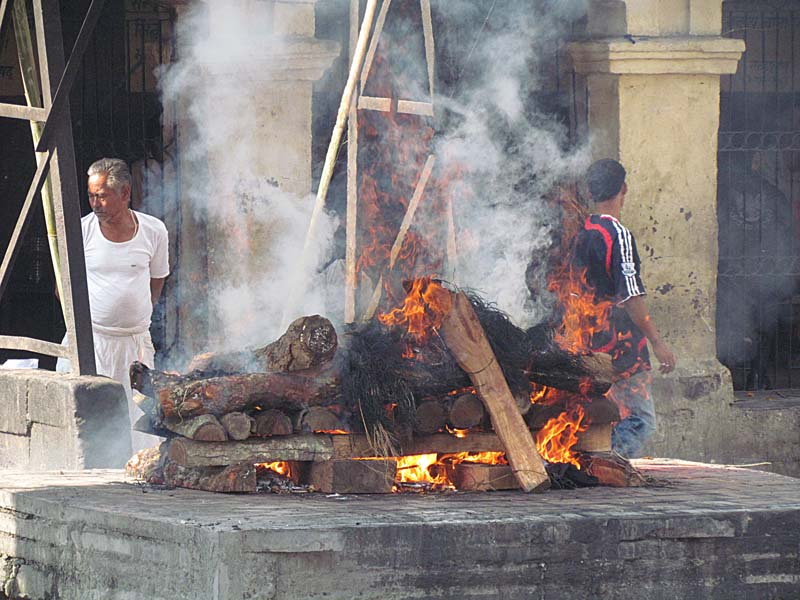
A cremation underway at the temple. Pashupatinath is a popular place to be cremated. The burning occurs in front of the temple. There
is a section for cremation of the royalty, north of some footbridges. There are also cremation areas for commoners, such as this one.
There is almost
always one or more cremations going on. Log fires are laid, the shrouded naked body is lifted on top, and the
fire is lit with little
ceremony.
Cremation is supposed to be done within 24 hours of death.

The Bagmati River is a holy river both in Hinduism and Buddhism, though it probably is not obvious to you looking at the filth in the river.
According to the Nepalese Hindu tradition, the dead body must be dipped three times into the Bagmati River before cremation.
The chief mourner (usually the first son), who lights the funeral pyre, must take a holy river water bath immediately after cremation.
Many relatives who join the funeral procession also take a bath in the Bagmati River or sprinkle the holy water on their bodies at the
end of cremation. The Bagmati River is considered to purify the people spiritually.
The Bagmati River is polluted by agricultural runoff and human waste. In Kathmandu, the river receives a high load of untreated sewage.
There is high pollution in the Bagmati River in Kathmandu because of its high population. People directly throw garbage in the river.
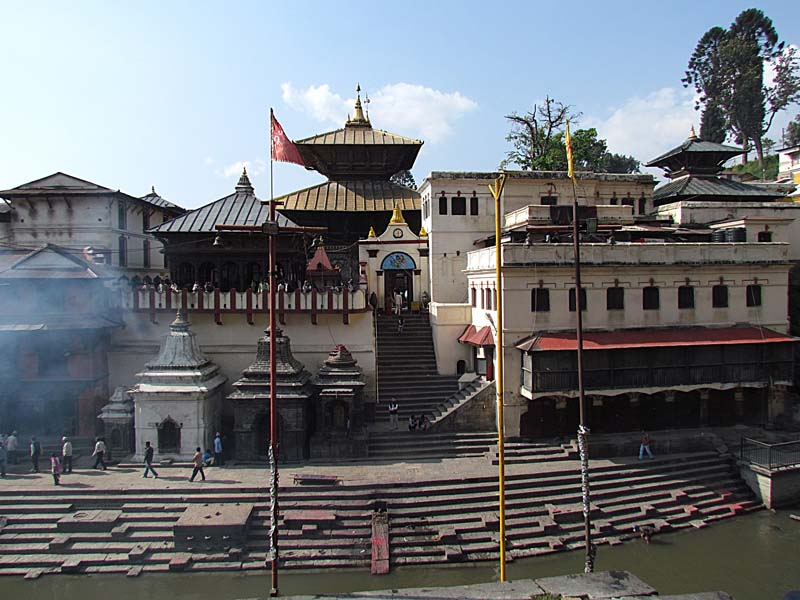
The Pashupatinath Temple. The golden roof of the 2 tiered pagoda dates from 1696.

A carving on one of the stone stupas.
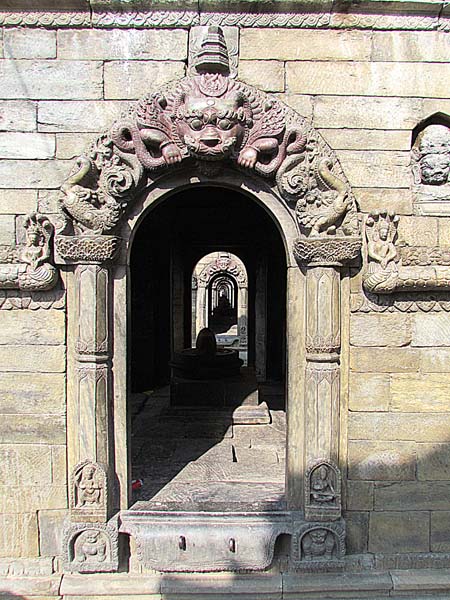
Looking through the stone stupas across the river from the temple.
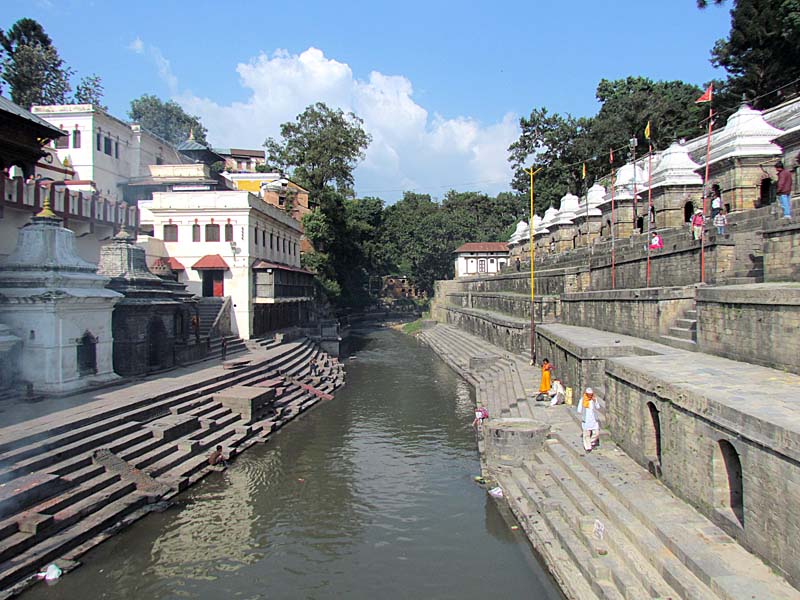
The Pashupatinath Temple on the left, the Bagmati River, and facing the temple on the right are stone stupas.
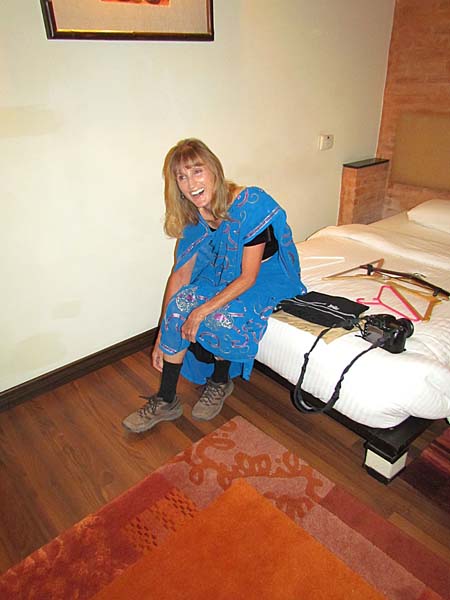
This is what happens when you appropriately pack light and only have hiking
boots to wear for the farewell dinner. For the farewell dinner, the women were loaned
saris to wear. Nepali women came to the Resort where we were to fit us as best they could
to the saris.
Nepali women regularly wear saris, the traditional dress of women across the Indian subcontinent.
The sari is a long piece of cloth from 13 to 29 feet which is draped around the wearer in various styles.
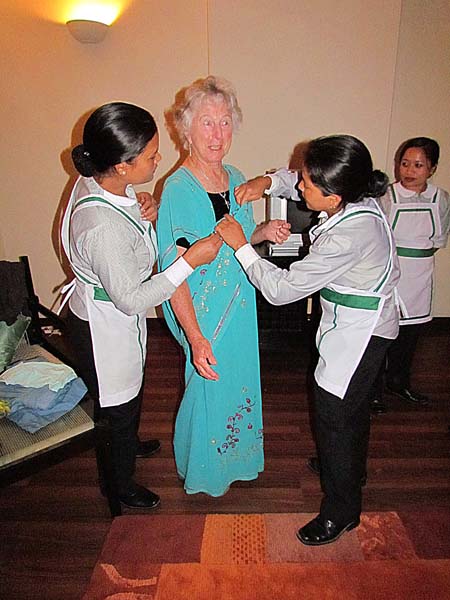
Female attendants putting the sari on June in one of the lodge rooms. They had to roll the sari several times around my waist to keep
it from falling off me, but it held up okay for the evening.
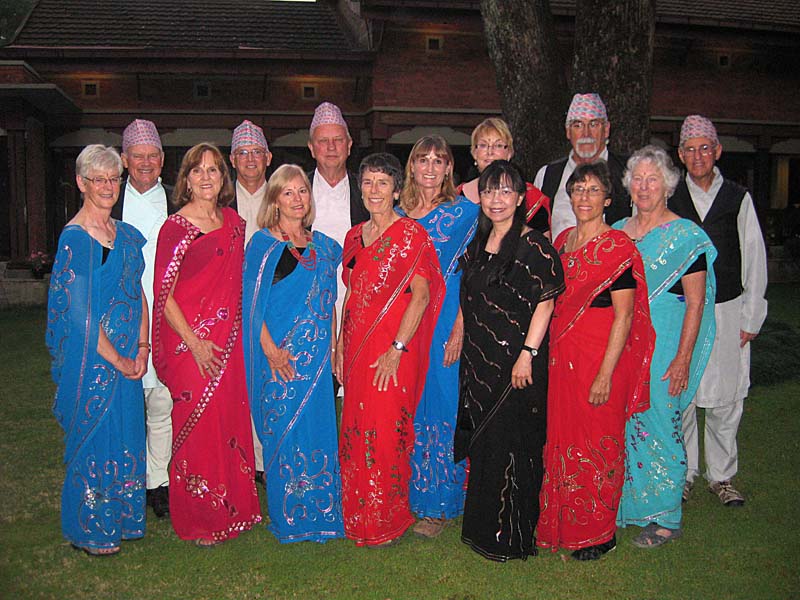
Group shot in traditional dress. Women left to right: Gunilla, Gynnie, Janelle, Pat, Kylee, Jan, Vanie, Jill, June. Men: John,
Terry, Bill, Mick, and Larry.
Daura suruwal is the name for traditional Nepali male dress. Daura suruwal consists of a knee-length sleeved shirt that ties closed at
the side, and pants.
The topi is the traditional hat of Nepali men. Men traditionally wear the topi
along with the daura suruwal.

Farewell dinner at a restaurant in Kathmandu with everyone but our Nepali tour guide Suresh dressed in traditional attire
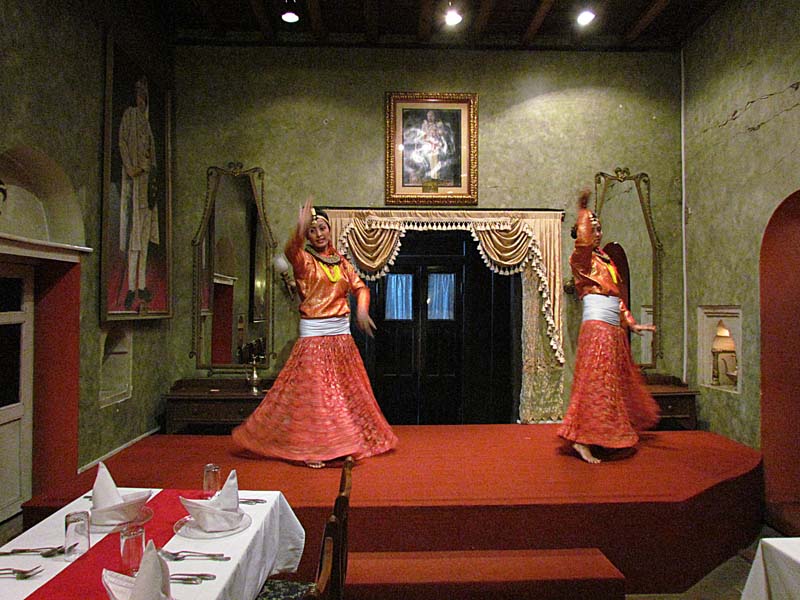
Two dancers at the restaurant entertaining us
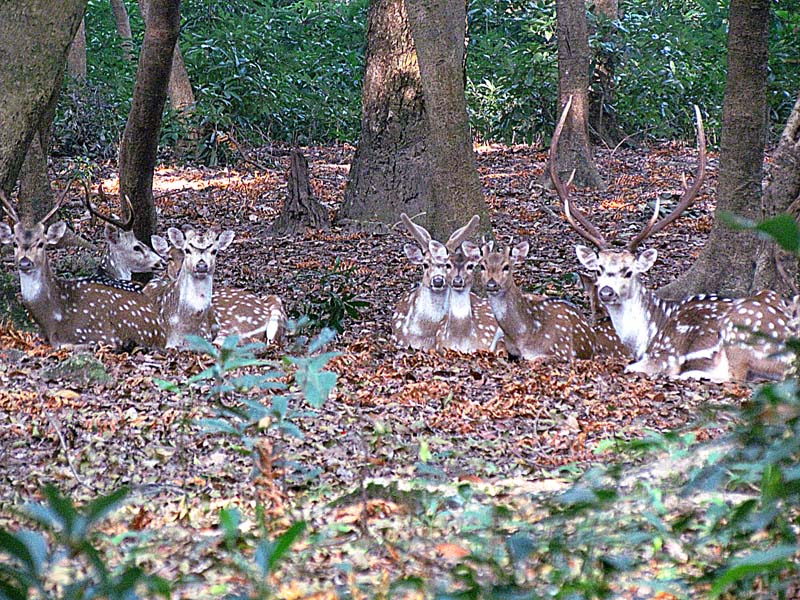
We had the morning free at the Gokarna Forest Resort before departing for Kathmandu International Airport for a late afternoon
flight to Delhi, India. A few of us went hiking with a guide from the Resort in the forest surrounding the Resort. We saw quite a few
spotted deer in the forest. They are very nervous animals and always alert for a stalking predator.
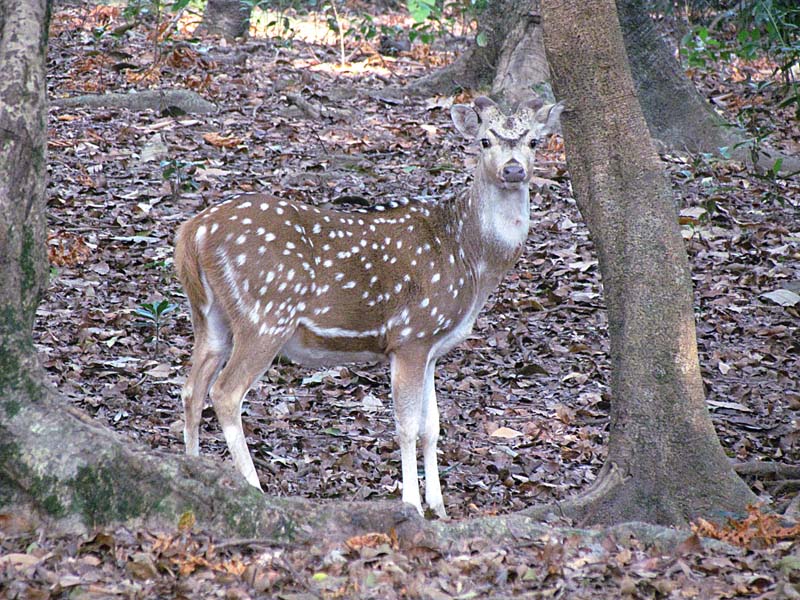
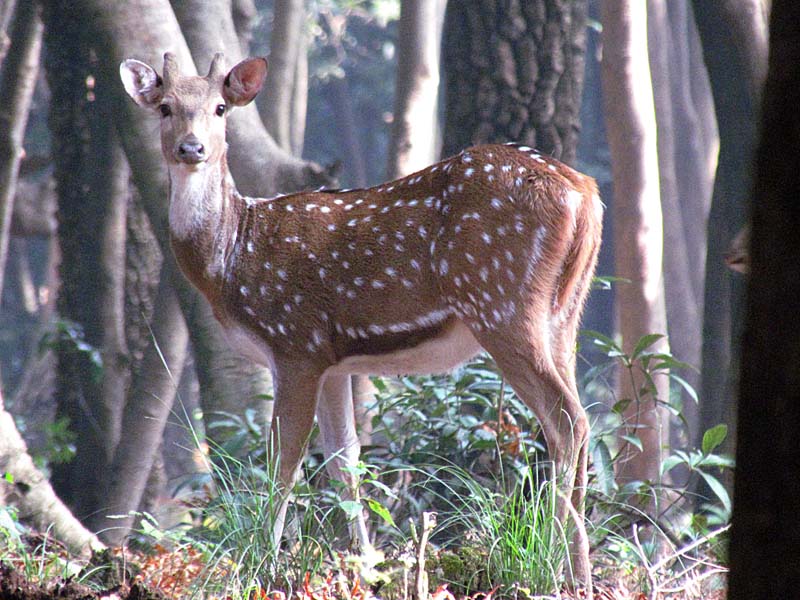
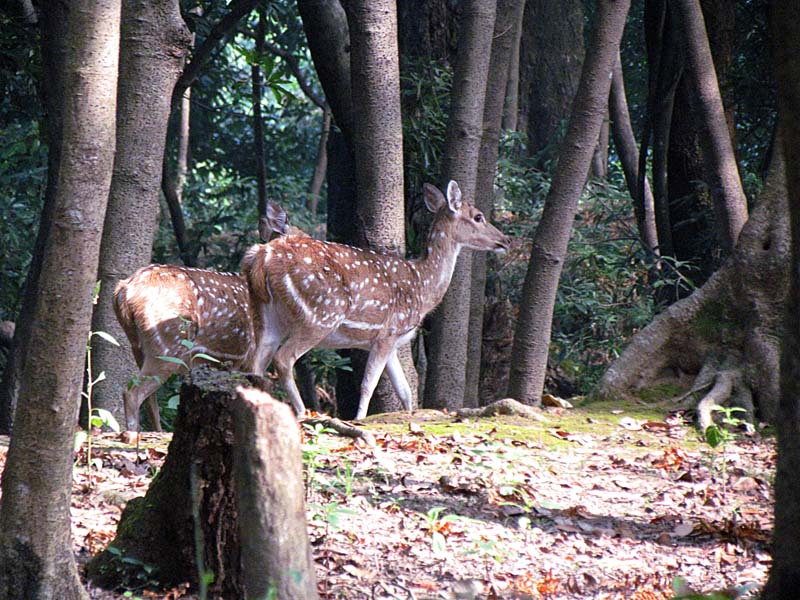
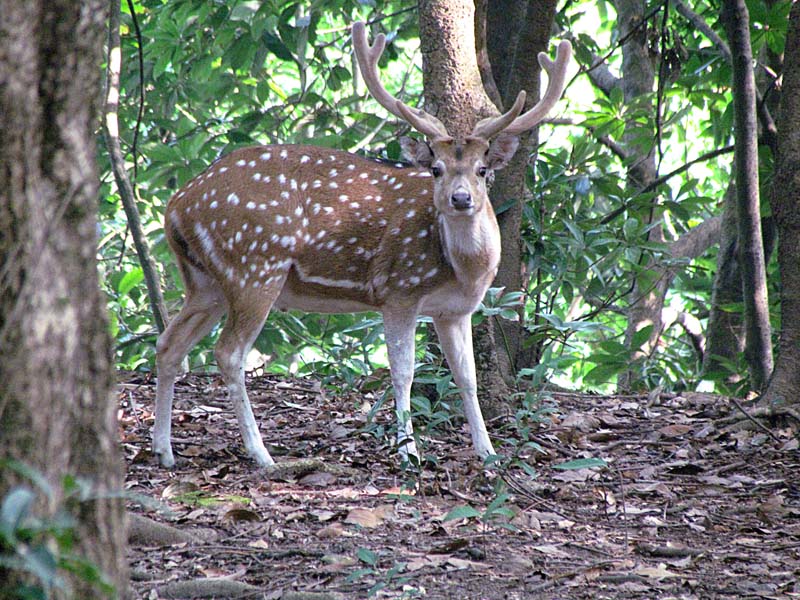
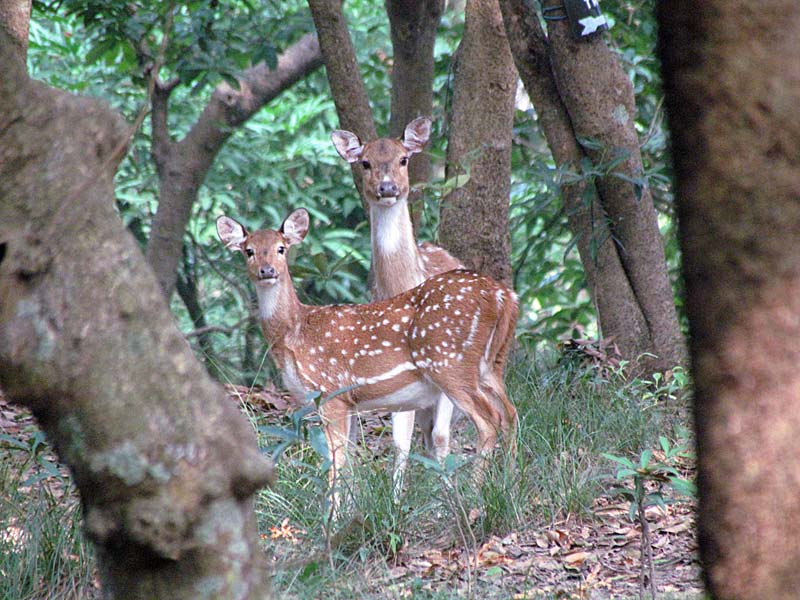
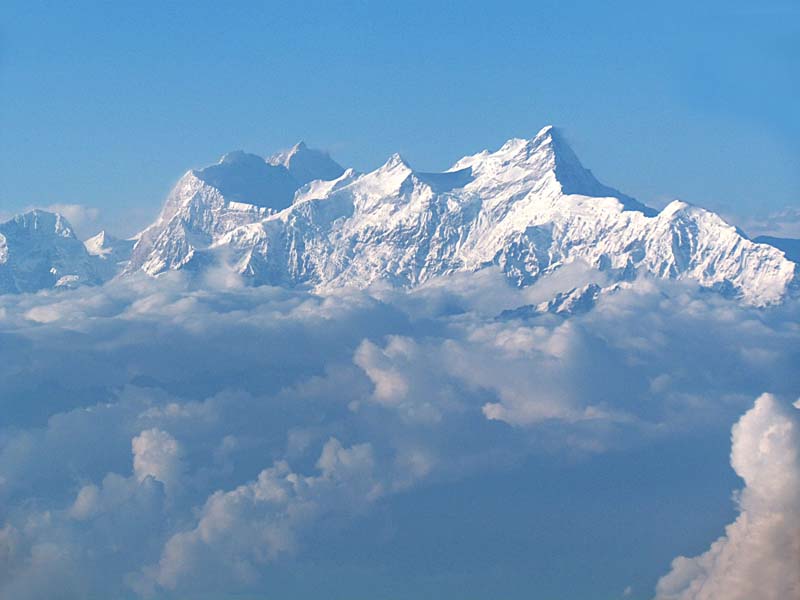
A final view of the Himalayas flying to Delhi from Kathmandu. This is the Annapurna Range.

Annapurna IV, 24,688 ft. elevation, and Annapurna II, 26,047 ft. elevation
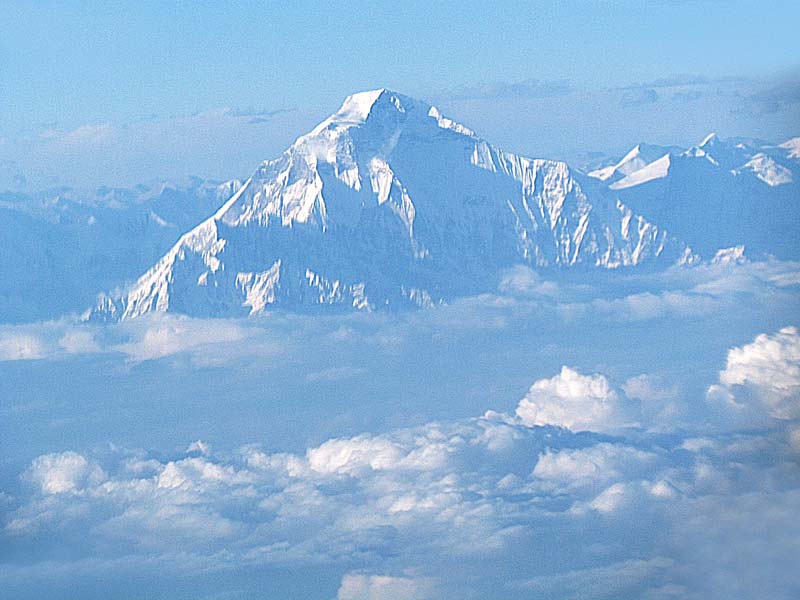
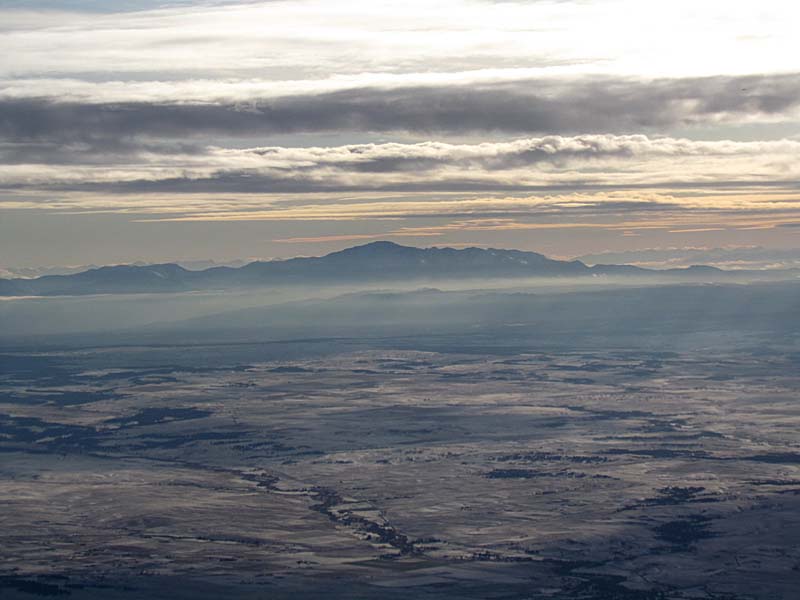
Sun setting as the plane is nearing Delhi. Some of us spent several hours in the Delhi airport before boarding an Air India flight shortly
after midnight on October 27 to fly nonstop to New York JFK Airport. We were again fortunate that hardly anyone was on the plane.
I had a row of 3 seats to myself in the tail section, where there were only 4 other people, none of whom were near me.
THE END
Link to Page One of Nepal
Link to Page One of Bhutan
Pat's Home Page